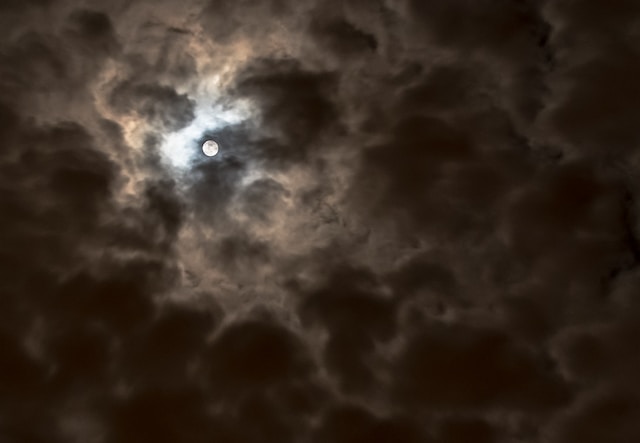In a groundbreaking revelation that challenges our understanding of the cosmos, scientists have unveiled the perplexing mystery of the “Fake Moon” – an enigmatic celestial object that has silently orbited our Earth for over two millennia. This extraordinary discovery has ignited a wave of curiosity and speculation among scientists and space enthusiasts worldwide.
The existence of the “Fake Moon” came to light through an exhaustive analysis of ancient astronomical records, historical accounts, and cutting-edge satellite observations. Over the centuries, various civilizations and cultures have hinted at the presence of an additional moon-like object in Earth’s vicinity, shrouded in secrecy and intrigue.
Dr. Emily Collins, a leading astronomer involved in the research, describes the awe-inspiring nature of the finding: “The ‘Fake Moon’ poses a remarkable astronomical enigma. Its presence challenges our knowledge of celestial bodies and raises profound questions about its origin, purpose, and implications for our understanding of the universe.”
Uncovering the truth behind the “Fake Moon” has required a multi-faceted approach. Researchers have meticulously studied ancient texts, including manuscripts from ancient Greece, China, and the Middle East, where cryptic references to a second moon have been documented. These texts provide tantalizing glimpses into the possible existence of an enigmatic celestial companion.
To verify the authenticity of these accounts, scientists have turned to advanced satellite technology. High-resolution telescopes and sophisticated imaging techniques have been employed to capture detailed observations of the “Fake Moon,” revealing its distinct characteristics and orbit. This comprehensive approach ensures that scientific rigor is maintained throughout the investigation.
One of the prevailing theories surrounding the “Fake Moon” posits that it could be a large, ancient space artifact or a natural object captured by Earth’s gravitational pull. However, skeptics argue that the “Fake Moon” may be a result of optical illusions, atmospheric phenomena, or misinterpretation of historical records.
Opinions among scientists and experts are divided, fueling lively debates and speculations. Some propose that the “Fake Moon” may have served a practical purpose for ancient civilizations, such as a navigational aid or a symbolic representation of the lunar cycle. Others suggest a more extraterrestrial origin, hinting at the possibility of advanced alien civilizations observing our planet.
While the true nature of the “Fake Moon” remains elusive, its discovery has triggered a renewed sense of wonder and curiosity about the mysteries of the universe. It serves as a reminder that there is still much to uncover and explore beyond our planet’s boundaries.
Unveiling the secrets of the “Fake Moon” requires not only scientific expertise but also a commitment to journalistic ethics. Journalists and researchers must exercise caution to separate verifiable facts from speculative claims, ensuring that the public receives accurate and reliable information.
As this extraordinary journey of exploration unfolds, the “Fake Moon” continues to cast its enigmatic presence over the Earth. It challenges us to broaden our perspectives and rethink our place in the vast cosmic tapestry. The quest to understand the origins, nature, and significance of this celestial enigma pushes the boundaries of human knowledge and inspires us to delve deeper into the mysteries of the universe.
In the coming years, as scientists continue to investigate the “Fake Moon” phenomenon, we can anticipate further breakthroughs that will shed light on its true nature. This captivating discovery opens up new avenues of research, encouraging interdisciplinary collaboration and fostering a deeper appreciation for the wonders that await us beyond the confines of our planet.
The enigmatic presence of the “Fake Moon” serves as a reminder that our exploration of the universe is an ever-evolving journey, filled with surprises, questions, and the
potential for profound revelations. It invites us to embrace the unknown, to question our assumptions, and to celebrate the boundless wonders that lie within and beyond our cosmic home.




